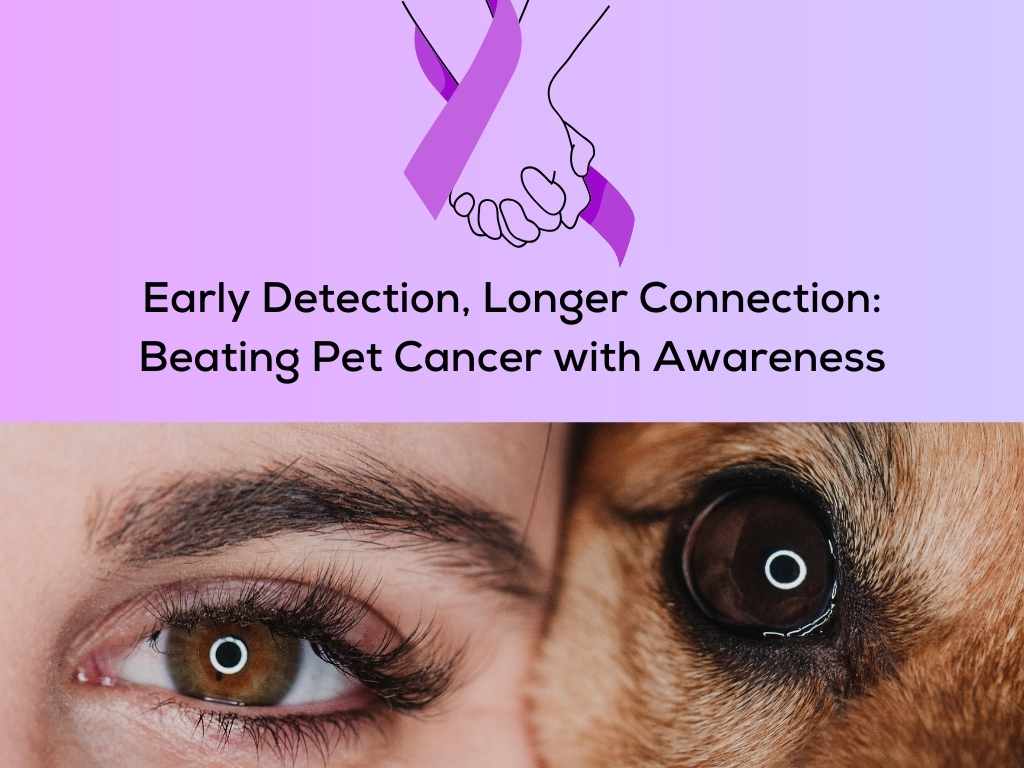Early Detection, Longer Connection: Beating Pet Cancer with Awareness

Did you know that 1 in 4 dogs and 1 in 5 cats will be diagnosed with cancer in their lifetime? It’s a startling statistic—but one that reminds us how important it is to stay informed, alert, and proactive when it comes to our pets’ health. May is Pet Cancer Awareness Month, and it's the perfect time to shed light on this serious topic so that pet parents like you can be better prepared.
Common Signs of Cancer in Pets
Cancer can look different depending on the type, breed, and age of your pet, but there are several common symptoms to keep an eye on:
- Difficulty eating or swallowingPersistent lameness or stiffness
- Sores that don’t heal
- Changes in bathroom habits
- Lethargy or reluctance to play
- Lumps or bumps that grow or change in shape
- Sudden weight loss or loss of appetite.
If you notice any of these signs, especially if they persist for more than a few days, don’t wait—schedule a vet visit.
What Causes Cancer in Pets?
Just like in humans, cancer in pets can be caused by a mix of genetic and environmental factors. Some of the common contributors include:
- Secondhand smoke – Pets exposed to cigarette smoke are more likely to develop cancer of the lungs, mouth, and nose.
- Chemical exposure – Pesticides, lawn treatments, and certain household cleaners can be harmful over time.
- Excessive sun exposure – Light-colored or thin-coated pets can develop skin cancer from too much UV radiation.
- Poor diet or obesity – A diet high in fillers and preservatives or excessive weight can increase the risk.
- Over-vaccination or hormonal imbalances – Though rare, certain injections and hormonal fluctuations may play a role.
What Testing Can Help?
If your vet suspects something is wrong, they may recommend:
- Bloodwork – To check for organ function and unusual cell counts
- X-rays or ultrasound – For a closer look at internal organs or masses
- Biopsy or fine needle aspiration – To determine if a lump is cancerous
- CT or MRI scans – For a more detailed image, often used for tumors near the brain or spine
Early detection plays a huge role in treatment success. Regular vet checkups (at least once a year, or twice for senior pets) can catch potential issues before they become serious.
Be Watchful, Be Hopeful
While hearing the word "cancer" is always scary, it’s not always a death sentence. Many pets respond well to treatment, and over 50% of dogs with cancer can be successfully treated if caught early. With advancements in veterinary oncology and more awareness among pet parents, our furry friends have better chances than ever.
So, this Pet Cancer Awareness Month, let’s commit to being observant, careful, and proactive. Know the signs, limit exposure to harmful substances, and don’t hesitate to get things checked out. Your watchful eyes could be the reason your pet gets the care they need in time.
After all, your love and attention are their biggest defense. Be mindful, be watchful—and your pet is in good paws.